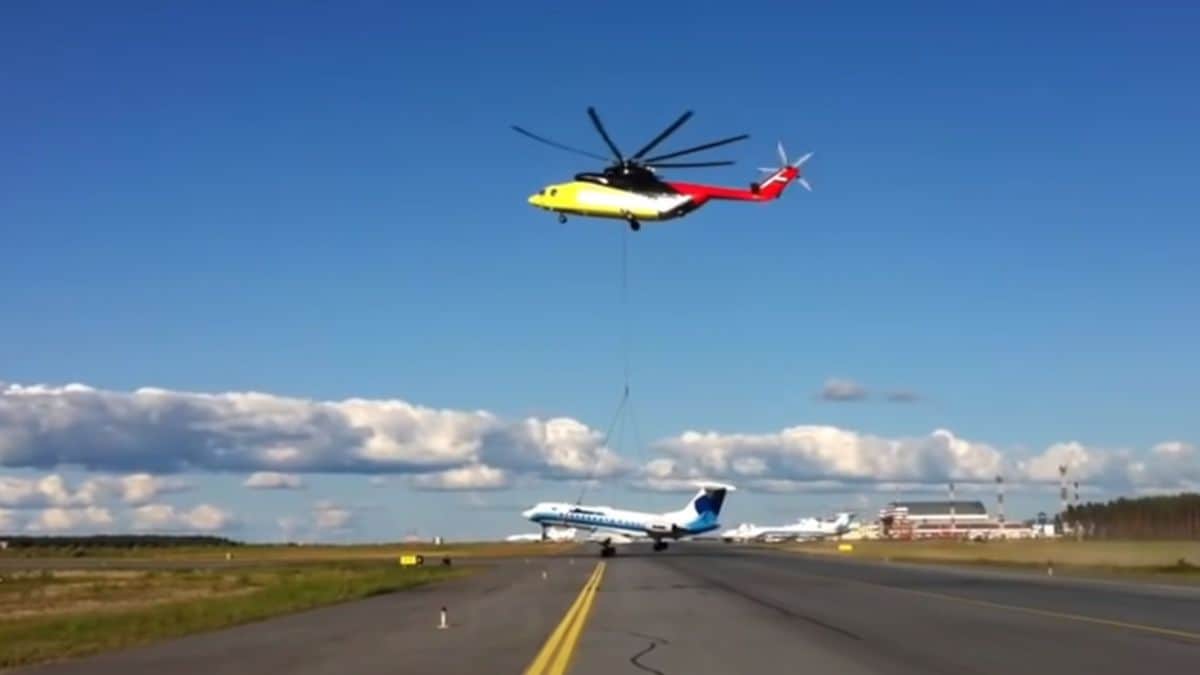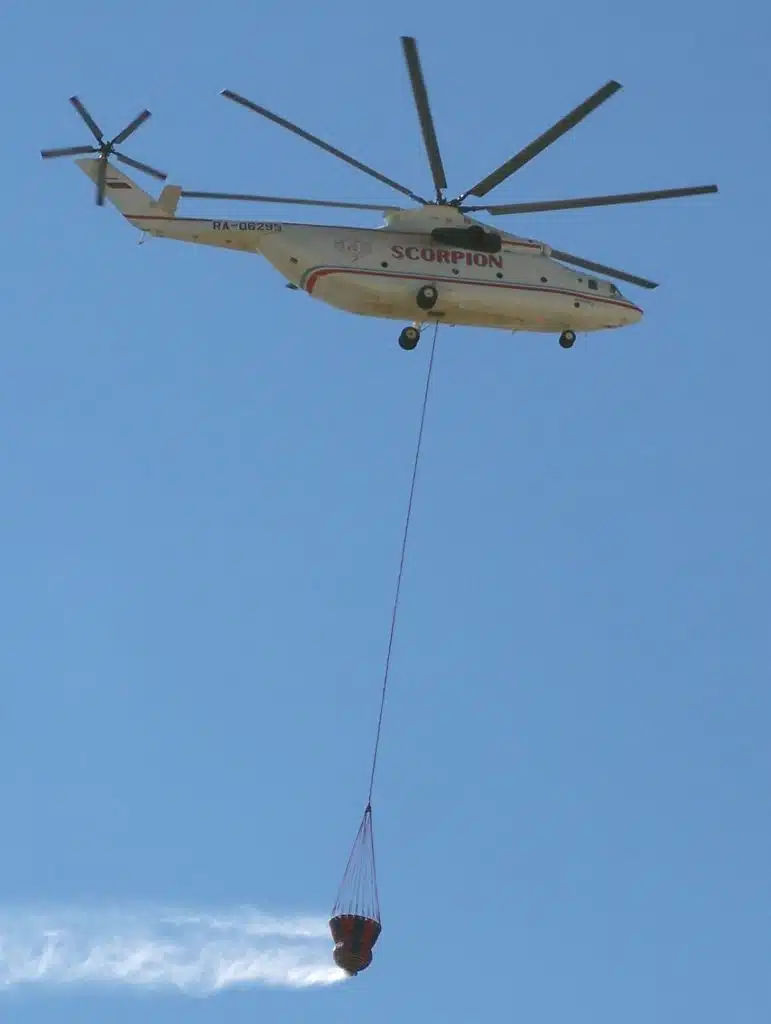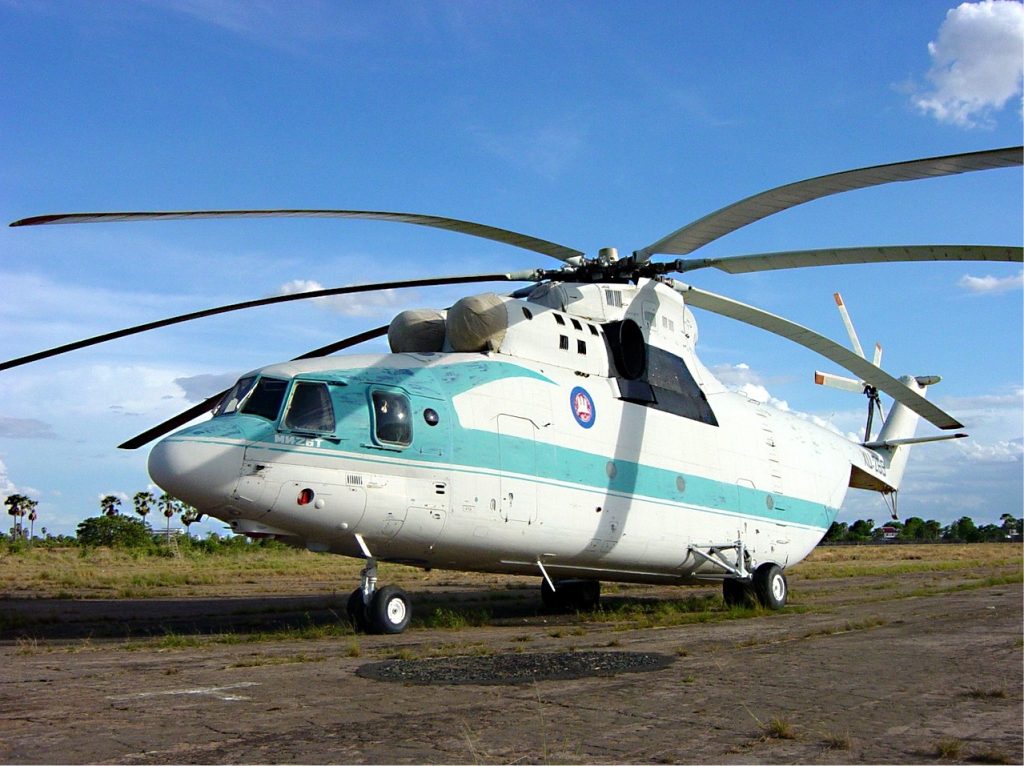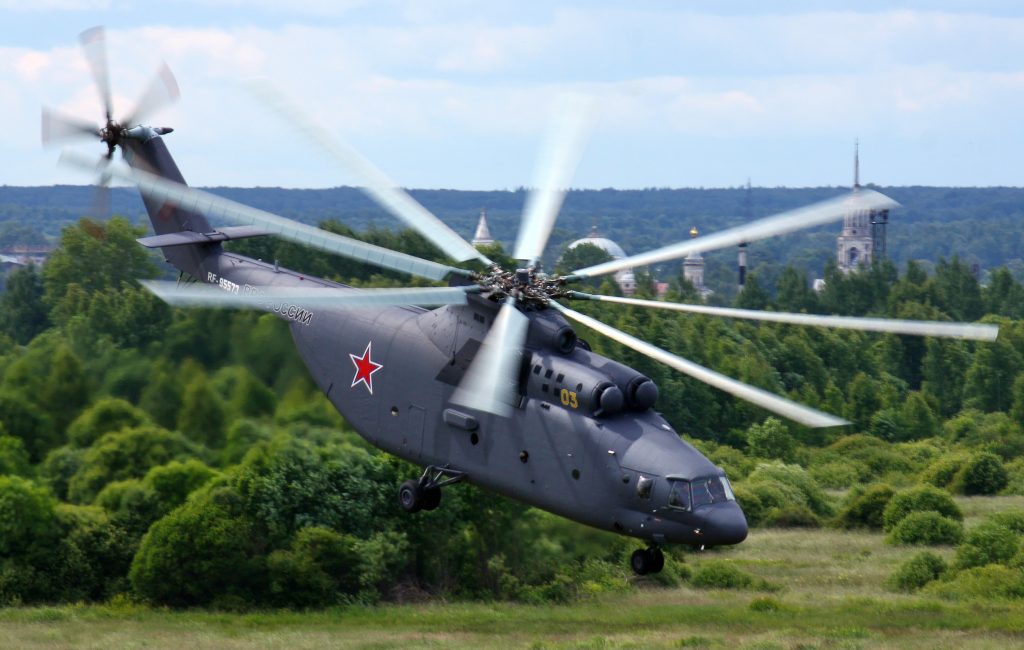
The Mil Mi-26 helicopter is an absolutely gargantuan piece of machinery, and is so powerful it can carry a commercial jet.
A lot of us know about the massive twin-rotor Chinook helicopter operated by the RAF and USAF.
Somehow, that’s not the biggest chopper around!
The Mil Mi-26 (also known by its NATO reporting name Halo) is the largest and most powerful helicopter to ever go into mass production.
Just how big is it?

A Greek Mil Mi-26 carrying out firefighting duties over Athens (Image: I, Badseed, CC BY-SA 3.0 , via Wikimedia Commons)
It may only be a single-rotor design, but don’t let that fool you.
The Mil Mi-26’s body is absolutely enormous.
It‘s 131ft long, is just over 26ft high and has a maximum take-off weight of 123,459lbs (56,000 kg).
It has a capacity of up to 44,000lbs (20,000kg) of cargo, up to 90 troops, or up to 60 stretchers.
It can also carry up to 12000 litres of fuel.
This gives it a range of 270 nautical miles with 17,000 lbs (7,700 kg) of cargo on board.
This can be increased to 1,040 nautical miles (1920km) with auxiliary tanks.
To be able to lift that massive helicopter up with all the weight it typically carries, it’s equipped with a pair of 8,500 kW (11,400 hp) Lotarev D-136 turboshaft engines.
These engines can take the Mi-26 up to a claimed top speed of 159 knots (295 km/h).
They also make the Mi-26 powerful enough to lift a small commercial airliner – yes, this actually happened once!
The largest helicopter Mil Mi-26 has a service ceiling of 15,100 ft, but it’ll usually never get anywhere near this height in normal operations.
Who operates it?

A Cambodian Air Force Mil Mi-26 (Image: Gilles de Maximy (GFDL 1.2 or GFDL 1.2 ), via Wikimedia Commons)
Its first operators were in its native Russia.
Since then it’s been used both in military and civilian roles all around the world, from China to Algeria to Venezuela.
It’s arguably one of Russia’s most successful aviation exports.
Like many Russian-made aircraft, the Mi-26 is also used by the North Korean Air Force.
Why does the Mil Mi-26 exist in the first place?

Image: Dmitry Terekhov from Odintsovo, Russian Federation, CC BY-SA 2.0 , via Wikimedia Commons
Russia needed a helicopter that could move seriously heavy loads.
Specifically, the Mi-26 needed to be able to carry armoured personnel carriers and mobile ballistic missiles.
Normally these kinds of loads would be transported by road or rail.
Both of those things, however, aren’t well-developed in remote parts of Russia.
They could be transported by a large cargo plane like an Antonov An-22 or an Ilyushin Il-76 too, but landing ᵴtriƥs that can take them aren’t common there either.
The most convenient way to haul those loads around was by helicopter.
They say necessity is the mother of invention.
With the Mil Mi-26, that was certainly the case!
Soucre: supercarblondie.com





